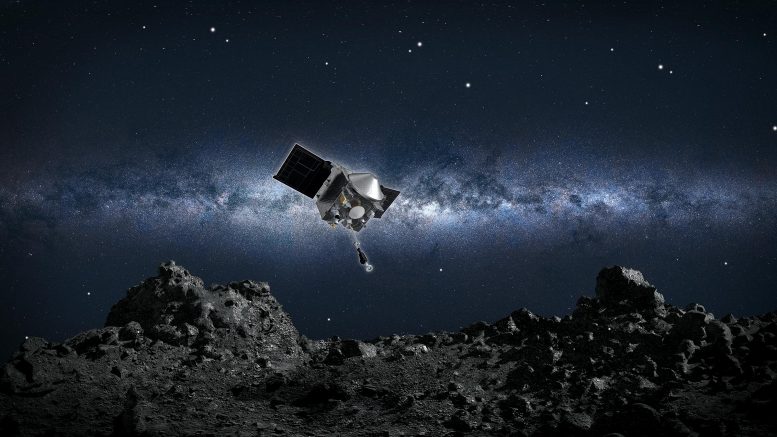
This artist’s concept shows NASA’s OSIRIS-REx spacecraft descending towards asteroid Bennu to collect a sample of the asteroid’s surface. Credit: NASA/Goddard/University of Arizona
A historic moment is on the horizon for NASA’s OSIRIS-REx mission. In just a few weeks, the robotic OSIRIS-REx spacecraft will descend to asteroid Bennu’s boulder-strewn surface, touch down for a few seconds and collect a sample of the asteroid’s rocks and dust – marking the first time NASA has grabbed pieces of an asteroid, which will be returned to Earth for study.
On October 20, 2020, the mission will perform the first attempt of its Touch-And-Go (TAG) sample collection event. This series of maneuvers will bring the spacecraft down to site Nightingale, a rocky area 52 ft (16 m) in diameter in Bennu’s northern hemisphere, where the spacecraft’s robotic sampling arm will attempt to collect a sample. Site Nightingale was selected as the mission’s primary sample site because it holds the greatest amount of unobstructed fine-grained material, but the region is surrounded by building-sized boulders. During the sampling event, the spacecraft, which is the size of a large van, will attempt to touch down in an area that is only the size of a few parking spaces, and just a few steps away from some of these large boulders.
On October 20, 2020, the OSIRIS-REx mission will perform the first attempt of its Touch-And-Go (TAG) sample collection event. Not only will the spacecraft navigate to the surface using innovative navigation techniques, but it could also collect the largest sample since the Apollo missions. Credit: NASA’s Goddard Space Flight Center
During the 4.5-hour sample collection event, the spacecraft will perform three separate maneuvers to reach the asteroid’s surface. The descent sequence begins with OSIRIS-REx firing its thrusters for an orbit departure maneuver to leave its safe-home orbit approximately 2,500 feet (770 meters) from Bennu’s surface. After traveling four hours on this downward trajectory, the spacecraft performs the “Checkpoint” maneuver at an approximate altitude of 410 ft (125 m). This thruster burn adjusts OSIRIS-REx’s position and speed to descend steeply toward the surface. About 11 minutes later, the spacecraft performs the “Matchpoint” burn at an approximate altitude of 177 ft (54 m), slowing its descent and targeting a path to match the asteroid’s rotation at the time of contact. The spacecraft then descends to the surface, touches down for less than sixteen seconds and fires one of its three pressurized nitrogen bottles. The gas agitates and lifts Bennu’s surface material, which is then caught in the spacecraft’s collector head. After this brief touch, OSIRIS-REx fires its thrusters to back away from Bennu’s surface and navigates to a safe distance from the asteroid.
After the orbit departure maneuver, the spacecraft undertakes a sequence of reconfigurations to prepare for sampling. First, OSIRIS-REx extends its robotic sampling arm – the Touch-And-Go Sample Acquisition Mechanism (TAGSAM) – from its folded storage position out to the sample collection position. The spacecraft’s two solar panels then move into a “Y-wing” configuration over the spacecraft’s body, which positions them safely up and away from the asteroid’s surface during touch down. This configuration also places the spacecraft’s center of gravity directly over the TAGSAM collector head, which is the only part of the spacecraft that will contact Bennu’s surface during the sample collection event.
Overhead view of OSIRIS-REx at sample site Nightingale, with a parking lot for comparison. Credit: NASA/Goddard/CI Lab/University of Arizona
Because the spacecraft and Bennu are approximately 207 million miles (334 million km) from Earth during TAG, it will take about 18.5 minutes for signals to travel between them. This time lag prevents the live commanding of flight activities from the ground during the TAG event, so the spacecraft is designed to perform the entire sample collection sequence autonomously. Prior to the event’s start, the OSIRIS-REx team will uplink all of the commands to the spacecraft and then send a “GO” command to begin.
To autonomously navigate to site Nightingale, OSIRIS-REx uses the Natural Feature Tracking (NFT) navigation system. The spacecraft begins collecting navigation images about 90 minutes after orbit departure. It then compares these real-time images to an onboard image catalog, using identified surface features to make sure that it’s on the right course toward the site. As the spacecraft approaches the surface, OSIRIS-REx updates the Checkpoint and Matchpoint maneuvers based on the NFT’s estimate of the spacecraft’s position and velocity. OSIRIS-REx continues to use the NFT estimates as it descends to the surface after the Matchpoint maneuver to monitor its position and descent rate. The spacecraft will autonomously abort should its trajectory vary outside of predefined limits.
Surface-level view of OSIRIS-REx at sample site Nightingale, with a parking lot for comparison. Credit: NASA/Goddard/CI Lab/University of Arizona
To ensure that the spacecraft touches down on a safe area that avoids the region’s many boulders, the navigation system is equipped with a hazard map of site Nightingale, which delineates areas within the sample site that could potentially harm the spacecraft. If the spacecraft’s NFT system detects that it is on course to touch one of these hazardous zones, the spacecraft will autonomously wave off its approach once it reaches an altitude of 16 ft (5 m). This keeps the spacecraft safe and allows for a subsequent sample collection attempt at a future date.
As the spacecraft performs each event in the sample collection sequence, it will send telemetry updates back to the OSIRIS-REx team, albeit at an extremely slow data rate. The team will monitor the telemetry during the excursion and will be able to confirm that the spacecraft has successfully touched down on Bennu’s surface soon after TAG occurs. The images and other science data collected during the event will be downlinked after the spacecraft has backed away from the asteroid and can point its larger antenna back to Earth to transmit at higher communication rates.
OSIRIS-REx is charged with collecting at least 2 oz. (60 grams) of Bennu’s rocky material to deliver back to Earth – the largest sample return from space since the Apollo program – and the mission developed two methods to verify that this sample collection occurred. On October 22, OSIRIS-REx’s SamCam camera will capture images of the TAGSAM head to see whether it contains Bennu’s surface material. The spacecraft will also perform a spin maneuver on October 24 to determine the mass of collected material. If these measures show successful collection, the decision will be made to place the sample in the Sample Return Capsule (SRC) for return to Earth. If sufficient sample has not been collected from Nightingale, the spacecraft has onboard nitrogen charges for two more attempts. A TAG attempt at the back-up Osprey site would be made no earlier than January 2021.
The mission team has spent the last several months preparing for the sample collection event while maximizing remote work as part of its COVID-19 response. On the day of TAG, a limited number of team members will monitor the spacecraft from Lockheed Martin Space’s Mission Support Area, taking appropriate safety precautions. Other members of the team will also be at other locations on-site to cover the event, while also observing safety protocols.
The spacecraft is scheduled to depart Bennu in 2021 and it will deliver the collected sample to Earth on September 24, 2023.
NASA’s Goddard Space Flight Center in Greenbelt, Maryland, provides overall mission management, systems engineering, and the safety and mission assurance for OSIRIS-REx. Dante Lauretta of the University of Arizona, Tucson, is the principal investigator, and the University of Arizona also leads the science team and the mission’s science observation planning and data processing. Lockheed Martin Space in Denver built the spacecraft and provides flight operations. Goddard and KinetX Aerospace are responsible for navigating the OSIRIS-REx spacecraft. OSIRIS-REx is the third mission in NASA’s New Frontiers Program, which is managed by NASA’s Marshall Space Flight Center in Huntsville, Alabama, for the agency’s Science Mission Directorate in Washington.

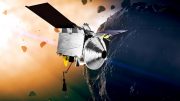
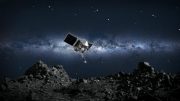
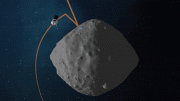
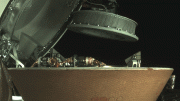
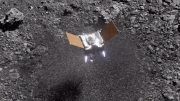
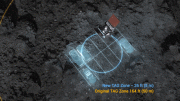
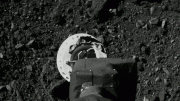
Be the first to comment on "NASA’s OSIRIS-REx Begins Its Countdown to TAG Asteroid Bennu’s Boulder-Strewn Surface"